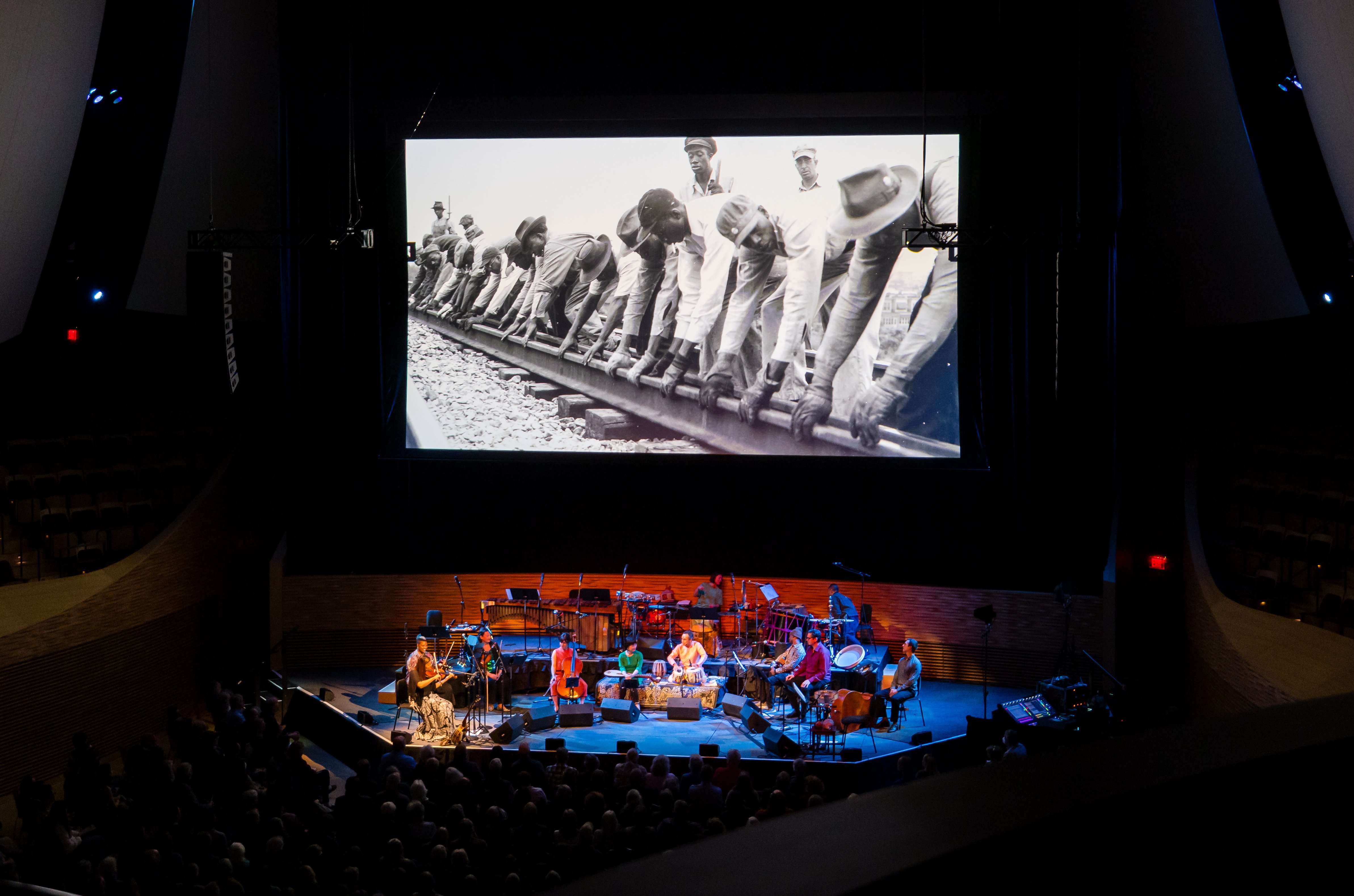On Wednesday evening, amid a frantic Week 8, I had the opportunity to watch the Silkroad Ensemble deliver a once-in-a-lifetime performance at Bing Concert Hall. As one of the youngest attendees of the performance, I felt calm and at peace for the first time after hearing the ensemble’s uniquely colorful sounds.
Eminent cellist Yo-Yo Ma founded the Silkroad Ensemble in 1998 as a musical collective that sought to transcend cultural boundaries, bringing together musicians from different backgrounds to craft a distinctive blend of sounds. The ensemble’s very name pays homage to the historic Silk Road, which connected the East and West and facilitated exchange of ideas for centuries.
Wednesday’s performance was a musical expedition delving into the rich tapestry of the American experience, with a specific focus on the historical significance of the railroad. Under the artistic directorship of Rhiannon Giddens, the ensemble masterfully interwove diverse threads of musical traditions that shape the United States, complete with a wide range of instruments such as the tabla, accordion, pipa and Japanese flute, to name a few.
Central to the ensemble’s approach is a spirit of multicultural collaboration and innovation through the universal language of music. “American Railroad” focused on the experiences of Irish immigrants, African Americans, Asian Americans and Native Americans. Through music and visuals, the ensemble told often-forgotten immigrant stories mirroring the diverse tapestry of the railroad itself.
While all the numbers were strong, a few resonated with me most profoundly. “Swannanoa Tunnel,” a folk song sung by Black laborers starting in the late 19th century, emanated wonderful harmonies and a soulful, industrial feel. The use of different forms of percussion and instruments, such as a pipa and a conch shell, added a unique layer to the piece. As a person of African descent, the familiarity of the tune had me tapping my toes and nodding my head with a soft smile.
The tune’s recurrence throughout the concert — juxtaposed with other pieces that paid homage to other cultures — added to my enjoyment.
For instance, the melody resurfaced during “Canoe Song,” a number that paid tribute to singer Pura Fé’s Tuscaroran ancestors. The piece smoothly transitioned the new melody into the familiar “Swannanoa Tunnel” as Fé sang beautifully without instrumental accompaniment. Fé’s raw vocals packed potent vulnerability with emotional intensity, providing the audience with a more intimate connection with the lyrics.
Another powerful mashup was with “Steel-Driving Man,” a piece that stood out as a personal favorite. Accompanied by percussion echoing the strenuous but necessary work, the backdrop featured images of Black men toiling at the railroad.
The initial somber and sad tones symbolized the workers’ struggles; various string instruments joined in as the piece shifted from a minor to a bright major key. The piece concluded with a hint of a calypso feel, signaling a final optimism.
Vocalist Mazz Swift performed an exceptional cover of a familiar hymn that I identified as “Have You Seen My Man?”, a song about a woman’s longing for her lover working away from home. This rendition surpassed any prior programming. The chemistry among performers, particularly the string instrumentalists, was palpable and added an extra layer of enchantment to the evening.
Despite the overall strength of the musical numbers, the performance’s background projections served as a distraction. I couldn’t grasp the meaning of some backdrops, primarily those that were paintings or composed of geometric shapes. Looking at them, I felt I was missing a part of a culture’s story.
Regardless, the performance resonated with me as a powerful reminder of how music can bridge cultural divides. As the Silkroad Ensemble continues to chart new musical territories, their work demonstrates how the arts can inspire connection and understanding in an ever-changing world. Their message of collaboration urges us to appreciate the nuanced threads in our shared human experience.
Editor’s Note: This article is a review and includes subjective thoughts, opinions and critiques.
A previous version of this article incorrectly identified a performer. The Daily regrets this error.
